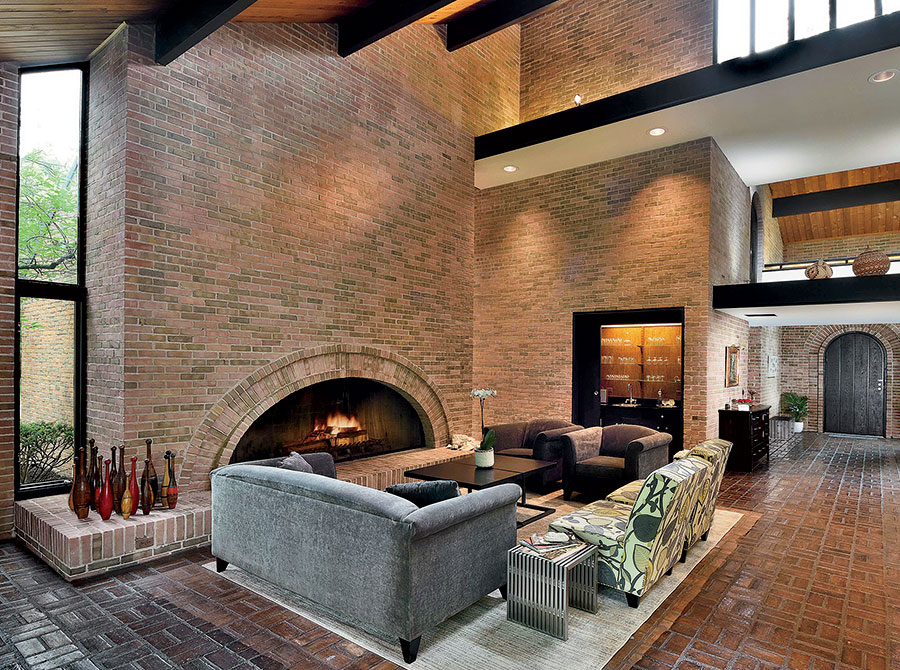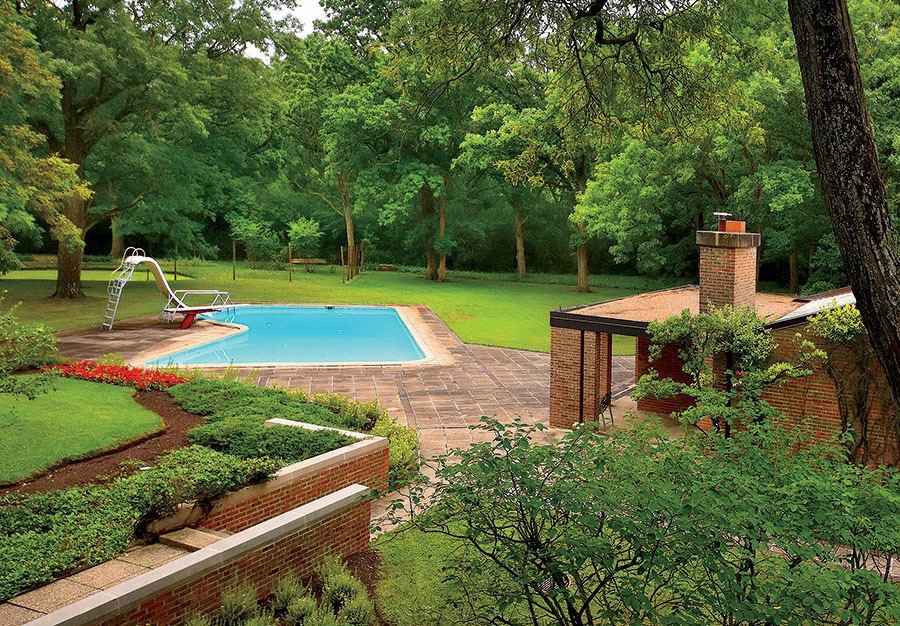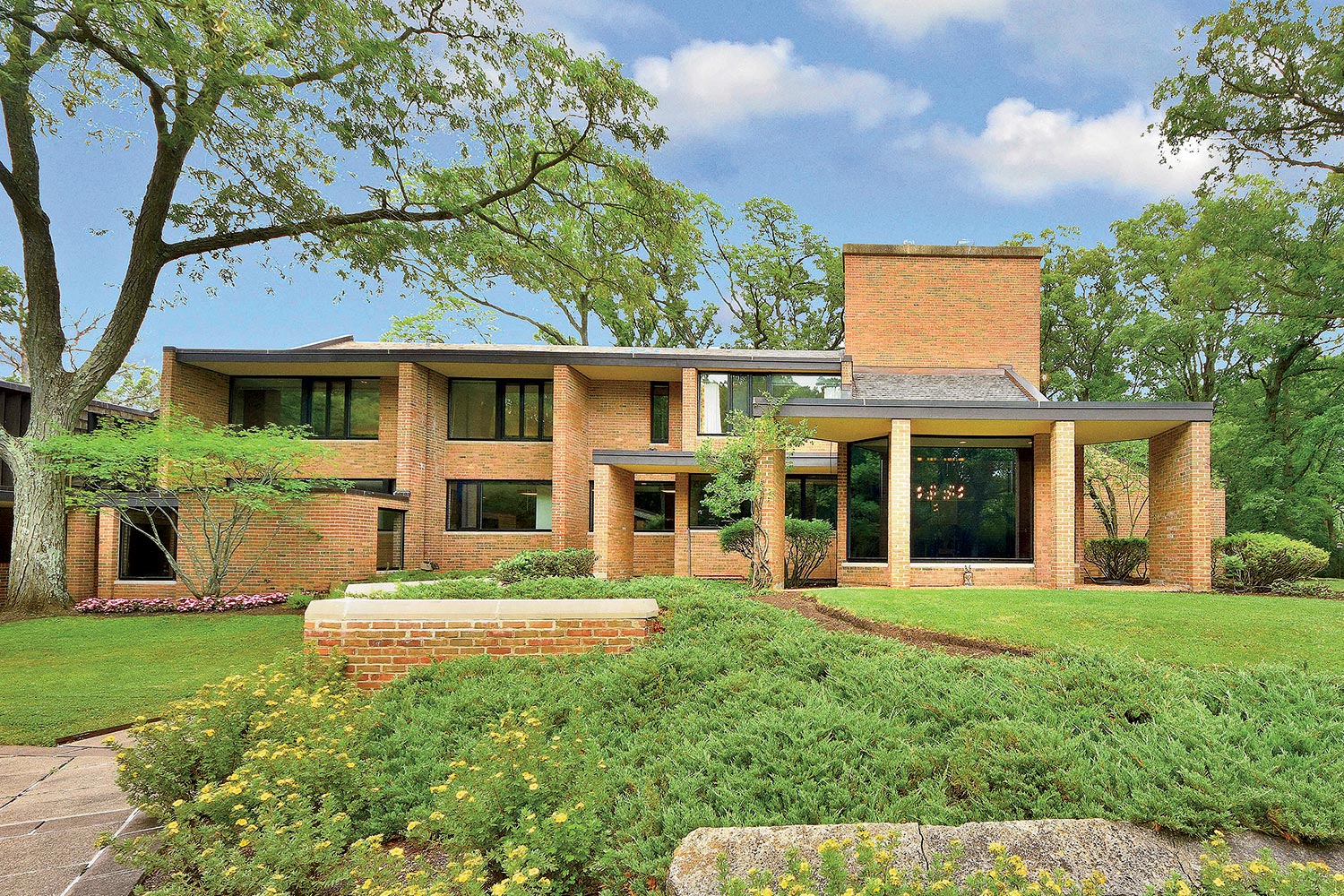Derivative MidCentury houses have been with us ever since developers glommed on to the idiom back in the ’50s. But architects who understood modernism and added their own spin designed homes light years from the average subdivision’s three-bed, two-bath. Edward Dart, chief designer of Water Tower Place, was one of Chicago’s best at this. Born in New Orleans and educated at Yale, Dart died young in 1975, at 53. But he packed a lot of work into his short career — most notably, dozens of churches, including St. Procopius Abbey in Lisle, and homes across the North Shore and western suburbs.

True to his time and training (he studied under modernist master Paul Schweikher in New Haven), Dart became adept at modernism’s open plan and flat roof. But he wasn’t afraid to veer from that program, as can be seen in a 7,621-square-foot 1964 residence situated on 18 acres in Lake Forest, which sold in mid-April. With a vaulted entryway, pitched roof, and significant vertical elements, this six-bedroom, six-bath home, at 2345 West Old Mill Road, is no mere study in horizontality. It doesn’t sink into the landscape, but stands upright, part of the topography. Listed at nearly $3.5 million, the property, which includes paddocks, a pool, a pond, and a three-bedroom caretaker’s cottage (not designed by Dart), is adjacent to the permanently protected 102-acre Westfork Savanna.

Although free flowing, the house is far from amorphous. A wet bar is tucked behind a sliding door. Kitchen and pantries have their place, as does the bookshelf-lined library. The voluminously proportioned living room — anchored by a massive hearth — echoes the spatial exuberance that also characterizes the architect’s ecclesiastical work. The home is uncompromisingly built of brick, but Dart mediated his chosen material with windows everywhere; even the bathrooms offer multiple views to the outdoors. Dart was very much an architect of his time, and for ours, as well.



